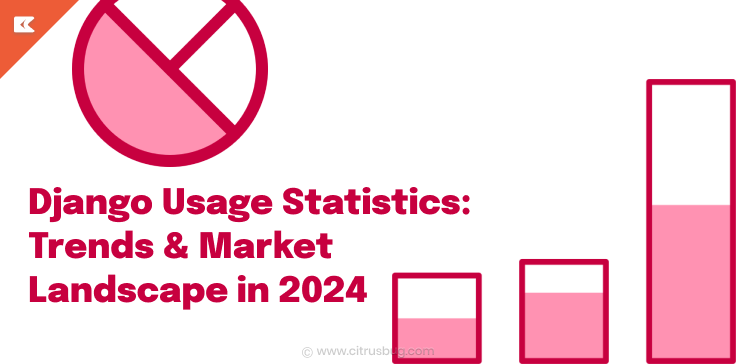It’s quick to master Python. With only a few lines of Python code, you can do a lot. In fact, a new Python Developer survey states that 84% of the respondents use Python as a main language. However, if you’re thinking of building a website in Python from scratch, you may be doing it wrong.
There are some other popular Python web frameworks in the modern world that you could use for web development. They’re fast, refined, and supported by several developers. Choosing the best web development framework depends on your project’s requirements, but some of the most popular options include Django, Flask, and Pyramid.
In this article, we’ve provided a Python for web development tutorial, wherein we discuss why Python frameworks are a perfect option for web development — where to begin and how. We’ve also added Python libraries and helper resources that can guide you navigate the web development process.
What Is A Web Framework?
Before we go into it let’s explain what a web framework really is.
The web framework is nothing but a series of packages and modules that support the creation of websites. It performs all low-level correspondence within the system and masks it from you so that you do not have trouble executing basic web development python tasks.
The line between which it draws the line to hide and which to not, focuses on the particular framework itself.
Why Choose A Python Web Framework?
By using Python in web development process, you can indeed build a web application from scratch, although there are a variety of reasons you wouldn’t want to. The best five reasons why you should prefer Python frameworks instead of doing it on your own are below.
But if you’re looking to leverage the power and simplicity of a Python framework to jump-start your web development project, diving into Django is a great option. In our detailed guide on how to develop web applications in Python using Django, we’ll walk you through everything you need to know to get started.
Utilized And Trusted By Many Multinational Businesses
In their web application creation, organizations such as Bitbucket, Pinterest, Instagram and Dropbox use well-known Python frameworks such as Pyramid and Django. So, it’s fair to assume that these systems can accommodate virtually anything you throw at them.
Hides Complex Low-level Information
As mentioned above, web frameworks are intended to cover and maintain all low-level knowledge so that when you create a web-enabled program, you as a developer do not have to dive deep into how it all works.
Save Your Time And Energy
The architectures have been developed to commit thousands of developers and test hours. Adding on top of that will save your precious time. Particularly when you are creating a basic website prototype or are closer to the deadline, using web frameworks will make life safer.
Security
One of the most crucial benefits of using a web framework rather than creating anything on your own is managing the protection of your website. As the web frameworks have been used and backed up by thousands, they are implicitly responsible for protection, avoiding any abuse of the web application.
Flexible
Good mechanisms are set in order to ensure scalability from the very outset of the production process. So, if you’re planning to scale your website by introducing a new feature or utilising a new database, web frameworks are more likely to scale faster than what you’re up to when you develop from scratch.
Which Python Framework To Choose?
There are lots of Python web frameworks, and each framework has its own strengths and limitations. It also important to determine the project specifications and to select one of the best ones from the list.
Here are the three most common web frameworks that are best for web development in Python.
Django
Django is currently the most common Python web framework and is mainly targeted at wider applications. It takes the “batteries-included” approach and includes everything required for web development in combination with the system itself. So, you do not have to do stuff like database management, prototype, routing, authentication, and so on. With a little less javascript, you will create amazing Django apps.
If you are creating a mid-high range of site applicants and are very familiar with Python, you could go for Django.
Pyramid
The Pyramid is the most versatile Python web framework and, much like Django, it is targeted at mid-scale applications.
If you think that Django is adding clutter to your web application, use Pyramid. It does not compel you to use a specific solution for a mission, but rather provides you with a plug-in framework as per your project specifications.
You do have simple web development features like routing and authentication, but that’s just about it. So, if you’d like to link to a storage database, you can use open-source libraries to do it yourself.
Flask
In comparison to Pyramid and Django, Flask is a microframework and is ideally suited for small-scale applications.
Even though it’s new, Flask web development has incorporated useful features of other frameworks. It includes features such as unit testing and built-in web development servers that allow stable and productive web applications to be developed.
Python Libraries For Web Development

Few valuable Python libraries for web development to keep a record of:
If you ever require a web crawler to retrieve data from your application, Scrapy is perfect for that. It’s a commonly used library for scraping, data processing, automated research, and more.
Zappa is a versatile library for creating an AWS Lambda serverless programme.
Requests is a library that enables you to quickly submit HTTP requests, and is used to connect with an application, helping you to get HTML pages or info, for example.
Another valuable library is Dash, which helps create web apps that have to do with data visualisation. Designed on top of Flask, it provides features like maps, visuals, dashboards, and more.
A Roadmap for Web Development in Python
Let ’s proceed onto the steps and technologies we need to be informed of before approaching the area of web development:
Step 1: Web Page Design
HTML: HTML is a basic component of the website. Each web developer must be aware of the fundamentals of HTML and browser definitions, DNS, web hosting, and HTTP request and response.
CSS: Cascading Style Sheet (CSS) is a style sheet that specifies how HTML elements look on a web page. CSS governs the site’s presentation, design, and formatting, like RGB values, border colours, blur background photo effects, background pictures, etc. CSS frameworks like Materialize or Bootstrap should also be considered to accelerate growth.
Step 2: Webpage Behaviour
JavaScript: Once your website has been created, you’d want to monitor the behaviour of your page. Attributes such as pressing a button on a page, scrolling the page in both directions, showing images in a rotating carousel (as you can do on various shopping websites). To do this, the fundamentals of JavaScript are a must to master. The source code of any website can be accessed with either the CTRL+U or the right-click display source code. You can find a range of JavaScript, HTML, and CSS code written for the web page.
To optimize the code and make it better, look towards Minifier. Minifying the JS and CSS code will make your website smaller and faster to load.
Step 3: DOM direction for effective web pages
jQuery: This has been the most common JavaScript library in the world. JQuery provides powerful methods of DOM infiltration. You may not need to write massive code to adjust the value of some entity attribute or to remove HTML code from a paragraph or division. JQuery offers methods such as.attr(),.html), (and.val) (that serve as getters, extracting details from DOM components for later usage. You can dynamically uninstall, substitute, and insert the DOM part using jQuery. So you can set up a dynamic web page.
Step 4: Front End Framework
Choosing Front End Framework: It is also advised that the front end framework be learned as well. So that you will get an understanding of full-stack growth instead of just back-end web development. Ember, React, Backbone, Vue, Angular are only a handful of the frontend frameworks.
Step 5: Programming Language
Python: Before going on, you should be aware of the fundamentals of Python web development. Python is easy to understand since it is syntax-like in the English language. Python offers several IDEs, such as Jupyter Notebook, Pycharm, for simple and user-friendly writing of python code. There are many other programming languages that can be used for web creation, but we’re concentrating on python because of its success.
Step 6: Web Framework
You can choose from python web frameworks such as Django, Flask, etc. You may use Django or Flask to apply business logic. The python frameworks are durable and versatile.
Express Javascript, Django (python), Spring Boot (Java), Ruby On Rails (Ruby), Flask (python) are common backend frameworks.
You must also be informed of the fundamentals of databases like SQLite, MongoDB for handling the business information utilizing frameworks.
Conclusion
Now you’ve got an idea of how to become a web developer of your choosing as a backend, frontend, or full-stack user of python. Utilizing a guide to hire Python developer can streamline your journey and ensure you find the right talent for your specific needs. We hope this helps you to learn more about Python web developmentWe hope this helps you to learn more about python web development.
Python with its strong application platform catalog is a perfect option for web development and will get you up to date with today’s modern requirements.
No matter which platform you use, there is no question that there is a great benefit of using a web framework than developing web applications from scratch.
You also should consider that spending your time in studying and using the Python web platform for web development projects, in fact, can save you time, resources and development effort.
If you’re looking for the perfect Python library for you, our team of expert Python programmers at Citrusbug can help. Contact us today and grow your business with our python development services.




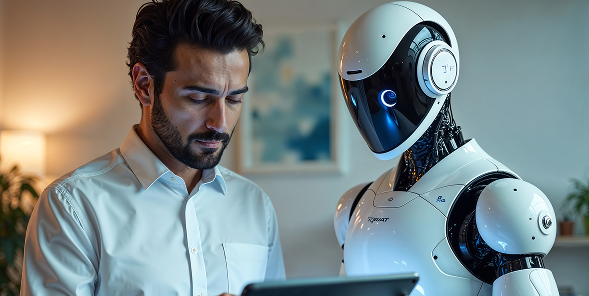
 SaaS Development
SaaS Development Web Application Development
Web Application Development Mobile Application Development
Mobile Application Development Custom Software Development
Custom Software Development Cloud Development
Cloud Development DevOps Development
DevOps Development MVP Development
MVP Development Digital Product Development
Digital Product Development Hire Chatbot Developers
Hire Chatbot Developers Hire Python Developers
Hire Python Developers Hire Django Developers
Hire Django Developers Hire ReactJS Developers
Hire ReactJS Developers Hire AngularJS Developers
Hire AngularJS Developers Hire VueJS Developers
Hire VueJS Developers Hire Full Stack Developers
Hire Full Stack Developers Hire Back End Developers
Hire Back End Developers Hire Front End Developers
Hire Front End Developers AI Healthcare Software Development & Consulting
AI Healthcare Software Development & Consulting Healthcare App Development
Healthcare App Development EHR Software Development
EHR Software Development Healthcare AI Chatbot Development
Healthcare AI Chatbot Development Telemedicine App Development Company
Telemedicine App Development Company Medical Billing Software Development
Medical Billing Software Development Fitness App Development
Fitness App Development RPM Software Development
RPM Software Development Medicine Delivery App Development
Medicine Delivery App Development Medical Device Software Development
Medical Device Software Development Patient Engagement Software Solutions
Patient Engagement Software Solutions Mental Health App Development
Mental Health App Development Healthcare IT Consulting
Healthcare IT Consulting Healthcare CRM Software Development
Healthcare CRM Software Development Healthcare IT Managed Services
Healthcare IT Managed Services Healthcare Software Testing services
Healthcare Software Testing services Medical Practice Management Software
Medical Practice Management Software Outsourcing Healthcare IT Services
Outsourcing Healthcare IT Services IoT Solutions for Healthcare
IoT Solutions for Healthcare Medical Image Analysis Software Development Services
Medical Image Analysis Software Development Services Lending Software Development Services
Lending Software Development Services Payment Gateway Software Development
Payment Gateway Software Development Accounting Software Development
Accounting Software Development AI-Driven Banking App Development
AI-Driven Banking App Development Insurance Software Development
Insurance Software Development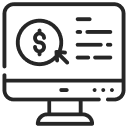 Finance Software Development
Finance Software Development Loan Management Software Development
Loan Management Software Development Decentralized Finance Development Services
Decentralized Finance Development Services eWallet App Development
eWallet App Development Payment App Development
Payment App Development Money Transfer App Development
Money Transfer App Development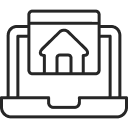 Mortgage Software Development
Mortgage Software Development Insurance Fraud Detection Software Development
Insurance Fraud Detection Software Development Wealth Management Software Development
Wealth Management Software Development Cryptocurrency Exchange Platform Development
Cryptocurrency Exchange Platform Development Neobank App Development
Neobank App Development Stock Trading App Development
Stock Trading App Development AML software Development
AML software Development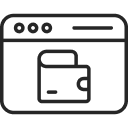 Web3 Wallet Development
Web3 Wallet Development Robo-Advisor App Development
Robo-Advisor App Development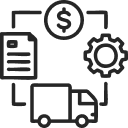 Supply Chain Management Software Development
Supply Chain Management Software Development Fleet Management Software Development
Fleet Management Software Development Warehouse Management Software Development
Warehouse Management Software Development LMS Development
LMS Development Education App Development
Education App Development Inventory Management Software Development
Inventory Management Software Development Property Management Software Development
Property Management Software Development Real Estate CRM Software Development
Real Estate CRM Software Development Real Estate Document Management Software
Real Estate Document Management Software Construction App Development
Construction App Development Construction ERP Software Development
Construction ERP Software Development
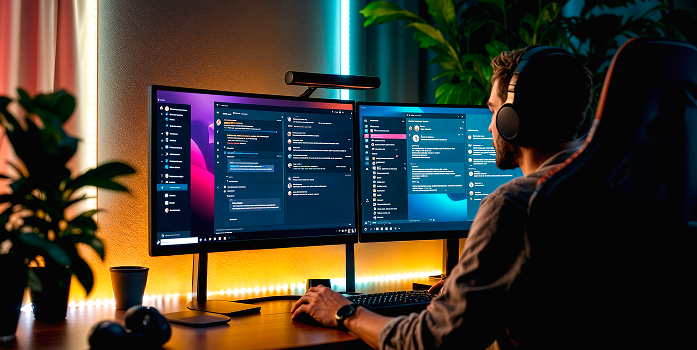






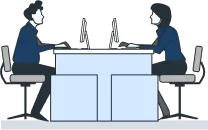
![How to Build an Image-to-Text Converter Using Python? [A Simple Guide for Developers] How to Build an Image-to-Text Converter Using Python? [A Simple Guide for Developers]](https://citrusbug.com/wp-content/uploads/How-to-Build-an-Image-to-Text-Converter-Using-Python_-A-Simple-Guide-for-Developers-1.png)
